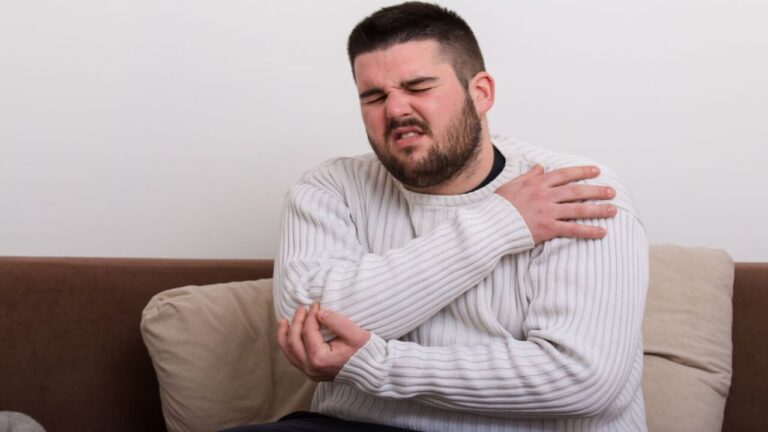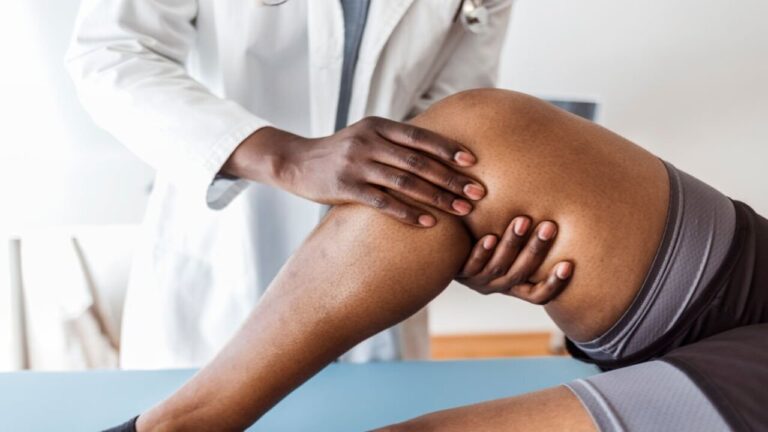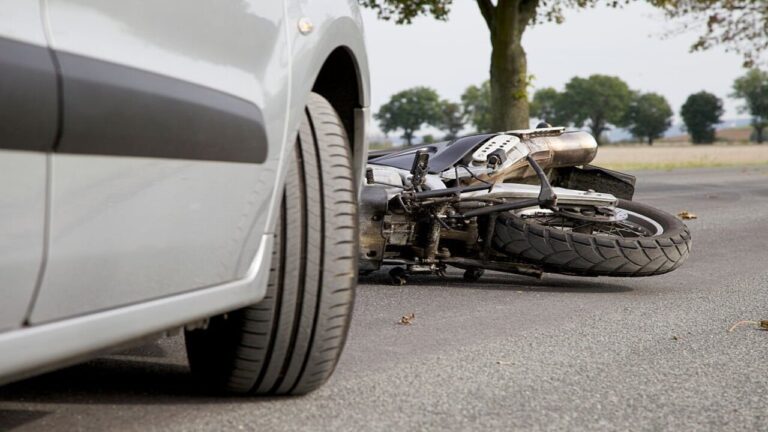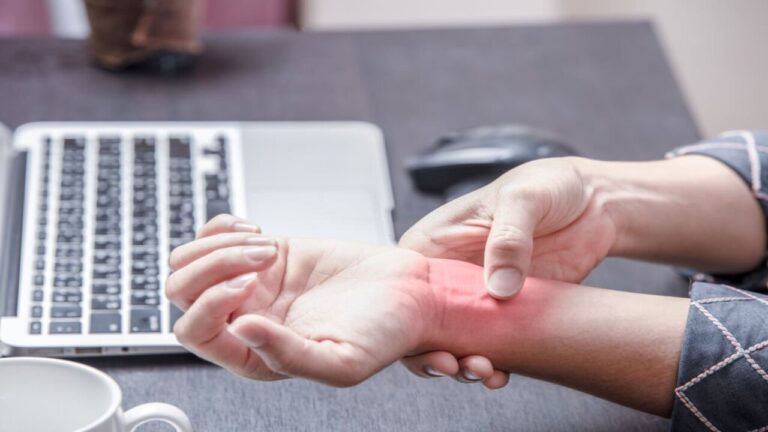Upper back pain can occur for many reasons. Each requires a specific treatment to address the underlying cause and prevent future symptoms. One of the best things you can do if you suffer this type of pain is to see a chiropractor for a diagnosis and personalized treatment plan.
Chiropractors provide a wide range of back injury treatments, prescribed based on your specific needs. If you have upper left back pain or other acute or chronic pain in your upper back, consider how a chiropractor can help today.
What Are the Possible Musculoskeletal Causes of Upper Back Pain?
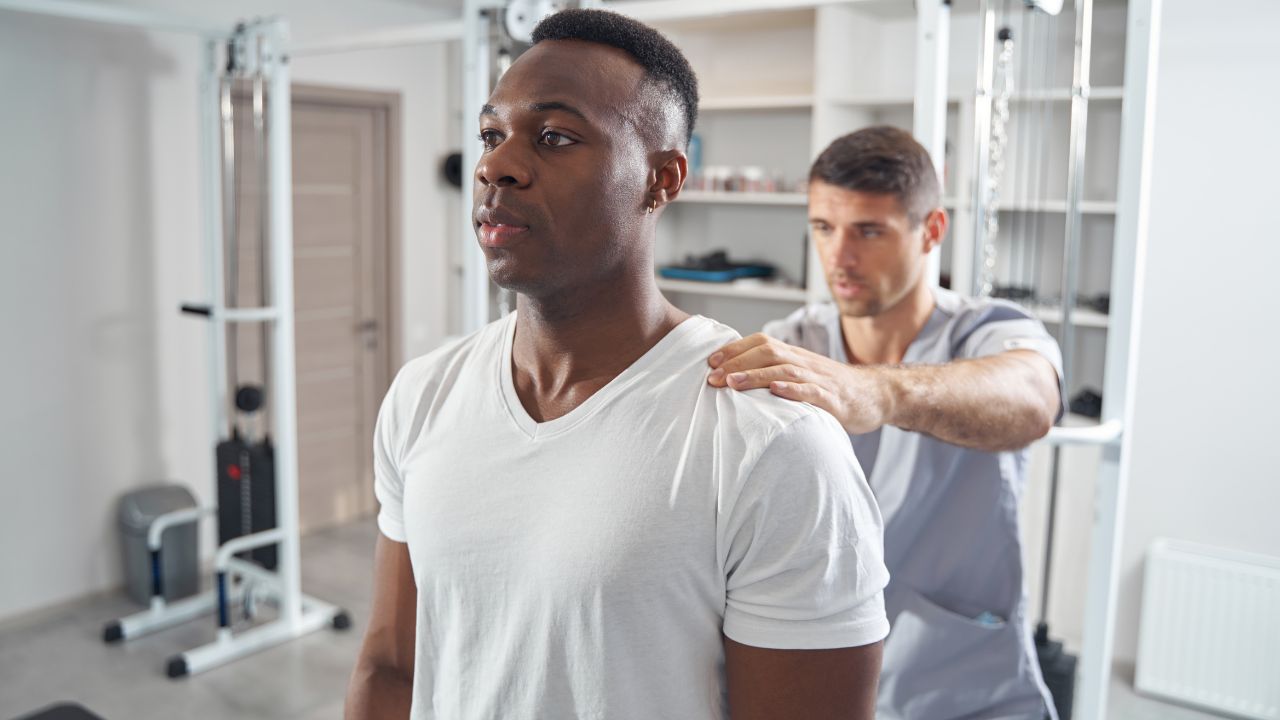
According to Cleveland Clinic, upper back pain, whether on the right or left side, can occur for many reasons. The underlying injury or illness is difficult to diagnose on your own, especially if you are unaware of any acute injury. Some of the causes chiropractors see in their practices include:
- Muscle Strains: Muscle strains are one of the most common causes of upper back pain. When these occur, you may know immediately. For example, lifting a heavy box or making a sudden move in a softball game could cause an acute injury.
- Spinal Issues: Injuries or disorders of the spine could lead to upper back pain. This could include scoliosis, kyphosis, or other diagnoses.
- Herniated Discs: Herniated discs can press on nearby nerves and create a range of symptoms, including pain. When the herniated disc is in your neck or upper spine, you could experience pain in these areas.
- Osteoarthritis: When you suffer from arthritis in the facet joints of your spine, pain, inflammation, and stiffness are common.
- Nerve Compression: Several conditions can cause nerve compression in your upper spine. This could cause significant chronic pain.
- Poor Posture: Sometimes, back pain is as simple as poor ergonomics or bad posture. If you sit or stand regularly with poor posture, it can cause muscle strains and other injuries.
Before you can begin treatment for your upper back pain, your chiropractor will need to accurately diagnose the underlying cause. To do this, they will conduct an in-depth health history and physical exam. This generally occurs during your first appointment with them. They may order medical imaging, such as X-rays, CT scans, or an MRI if necessary.
How Does a Chiropractor Help Patients With Upper Back Pain?
Chiropractors combine chiropractic care and physiotherapy with pain management techniques to provide effective, non-invasive care for patients with musculoskeletal injuries and disorders. They aim to address both the symptoms and the underlying cause of pain, providing:
- Pain relief
- Prevention of future symptoms
- Improved strength, flexibility, and overall health
- Better quality of life
Once you have a diagnosis, your chiropractor will develop and prescribe a personalized treatment plan. First, they will find non-pharmaceutical ways to ease your symptoms and promote healing, such as ultrasound therapy, massage, or electrical stimulation (e-stim).
Your chiropractor will likely prescribe one or more spinal adjustments using various spinal manipulation techniques based on your diagnosis. This treatment is often effective for improving the alignment of the spine and improving its function.
You’ll also receive physical therapy to strengthen the affected muscles and provide support for your spine. At the same time, these exercises will increase flexibility and work to prevent future injuries or recurrences.
Prevention of Future Injuries
One of the biggest benefits of having a holistic practitioner treating your upper back pain is the emphasis on treating the underlying cause and ensuring you do not need to see them over and over for the same symptoms. To this end, you can expect your plan to include:
- Posture Correction: Your doctor can teach proper posture for sitting and standing and provide insight into ergonomic changes to reduce your risk of injury.
- Education: You will learn about your underlying injury or condition and how to prevent future flare-ups or reinjury.
- Prevention: Your physical therapist can explain the common issues people with your injury experience and how to avoid them.
- Lifestyle and Activity Modifications: You will learn proper lifting techniques, how to choose the best tools to help you, and how to modify your activities to reduce your risk of injury.
- Nutritional Counseling: When necessary, your doctor might recommend a specific diet to reduce inflammation or supplements to improve your joints
What Are the Most Commonly Prescribed Treatments for Chiropractic Care for the Upper Back?
The treatments and therapies you will receive depend entirely on your unique symptoms, diagnosis, overall health, and numerous other factors. There is no one-size-fits-all solution to diagnosing, managing, treating, and preventing upper back pain and stiffness. Instead, your doctor will prescribe a personalized treatment plan for you.
This plan could include some or all the following treatments and therapies:
Spinal Manipulation
Spinal manipulation is another name for chiropractic adjustments. These are generally manual adjustments of your upper spine meant to improve alignment and relieve any pressure on nerves in the area. Some people report reduced pain and improved range of motion with a single adjustment, but they are typically prescribed as a series of treatments.
Spinal Mobilization Techniques
Your chiropractor will use gentle pressure and guided movement of the affected joints to reduce stiffness and improve their overall function. Often, this focuses on the facet joints in the upper spine.
Instrument-Assisted Soft Tissue Mobilization (IASTM)
Your chiropractor or a therapist may use special instruments to release fascia and scar tissue that restricts movement to improve tissue mobility and reduce symptoms.
Traction Therapy
Sometimes, traction therapy is effective for addressing upper back pain. These treatments involve mechanical or manual stretching of the spine. This decompresses the spinal column and relieves pressure on the affected discs and nerves.
Soft Tissue Therapy
Therapists employ numerous techniques that relieve muscle tension, improve flexibility, and help the spine heal. These treatments could include prescribing special stretches as a part of physical therapy, specific types of massage therapy, myofascial release techniques, and trigger point therapy.
Physical Therapy
Physical therapy is a crucial part of a chiropractic plan to alleviate upper back pain and treat the underlying cause. While chiropractic techniques address the cause, physical therapy allows the patient to rebuild strength, regain range of motion, and leave treatment healthier than they were before their injuries occurred.
Physical therapy involves doing specific, prescribed exercises that work on the muscles, ligaments, and other tissues that support the upper back. They will not only build muscle but also enhance flexibility and improve posture. This process is the best way to prevent future injuries for most patients.
Each patient will receive their own set of exercises and learn the routine from their therapist. The plan will depend greatly on their current abilities and future goals.
Complementary Therapies
Most chiropractors provide some type of complementary therapy to aid healing and help manage pain. You may begin this treatment during your first visit and continue as you progress, or you may only need a few therapies. Complementary therapies aim to relax the affected muscles, reduce your pain, and increase blood flow to promote healing. Examples include:
- E-stim
- Ultrasound therapy
- Laser therapy
What Can I Expect When I See a Chiropractor for Upper Back Pain and Related Symptoms?
When you have your first appointment with a chiropractor for upper back symptoms, it is hard to know what to expect. However, most practitioners know how to set you at ease. Understanding their process can also make this visit easier.
First, wear comfortable clothing and expect your initial examination to take longer than your future appointments. The initial appointment will focus on understanding your needs and diagnosing the cause of your symptoms. Your chiropractor will ask you questions about your overall health, previous conditions, symptoms, and if you know when your injury occurred.
You can expect a physical exam to feel your spine and medical imaging to get a look at your spine. Often, this includes only X-rays, but other imaging tests might be necessary.
Using what they learn during your exam, your chiropractor will develop a personalized treatment plan that likely includes:
- Pain management techniques
- Chiropractic adjustments and other techniques
- Physical therapy
Your chiropractor will explain the plan, how long it will last, and what you can expect. You may begin your treatment on the same day. As you continue visiting the clinic, your doctor and therapists will assess your progress each time. This routine allows them to alter your treatment plan as necessary.
Most people experience changes to their plan as they progress faster than expected, need more time to heal, develop soreness, or have other changes that affect their treatment. This is normal.
Call the Naples Community Injury Center for Your Initial Intake Exam
At Naples Community Injury Center, our chiropractors see patients reporting upper left back pain regularly. The Naples Community Injury Center team has more than 60 years of combined experience helping patients recover. We have offices in Naples, Marco Island, and Estero. Contact us today for an appointment.

